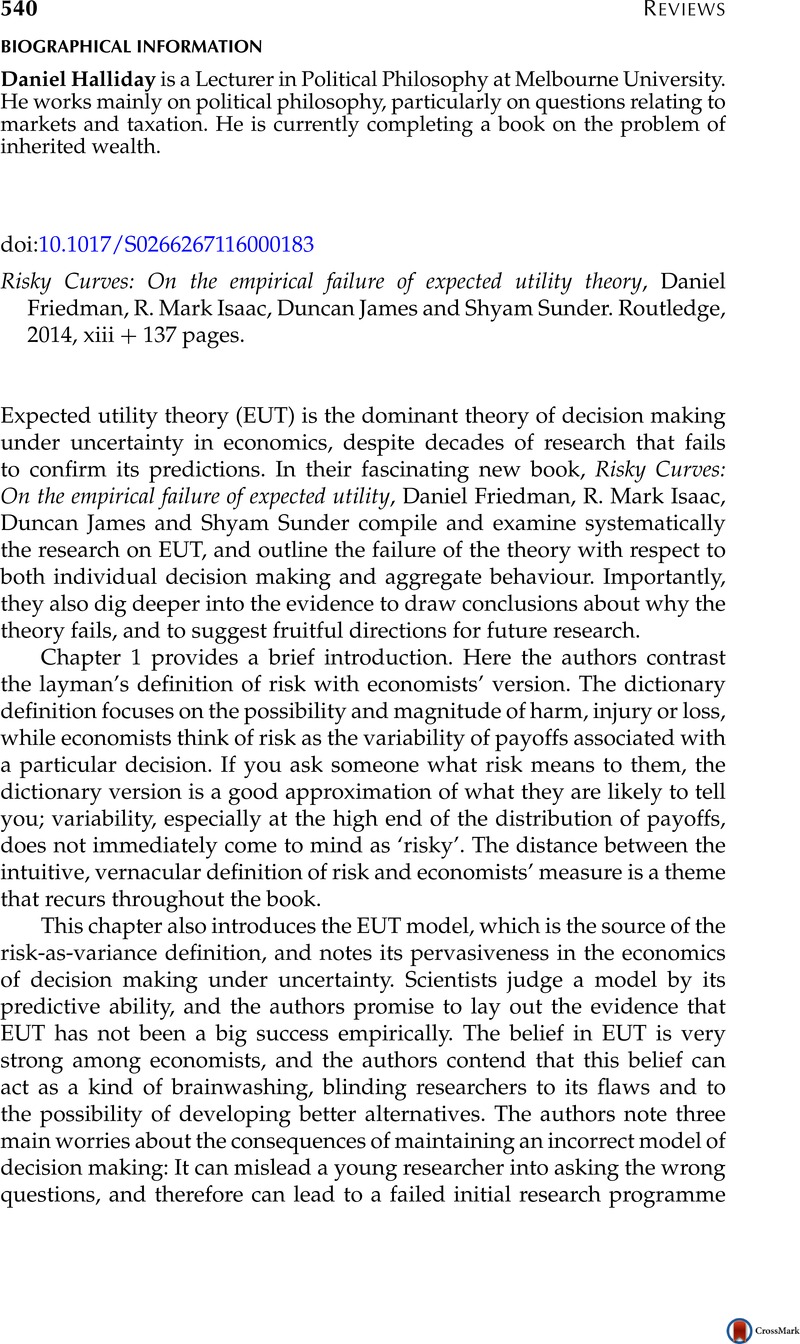Crossref Citations
This article has been cited by the following publications. This list is generated based on data provided by Crossref.
Brokesova, Zuzana
Deck, Cary
and
Peliova, Jana
2017.
Comparing a risky choice in the field and across lab procedures.
Journal of Economic Psychology,
Vol. 61,
Issue. ,
p.
203.
Fairley, Kim
Parelman, Jacob M.
Jones, Matt
and
Carter, R. McKell
2019.
Risky health choices and the Balloon Economic Risk Protocol.
Journal of Economic Psychology,
Vol. 73,
Issue. ,
p.
15.
Autzen, Bengt
2023.
The two faces of risk.
Biology & Philosophy,
Vol. 38,
Issue. 2,


